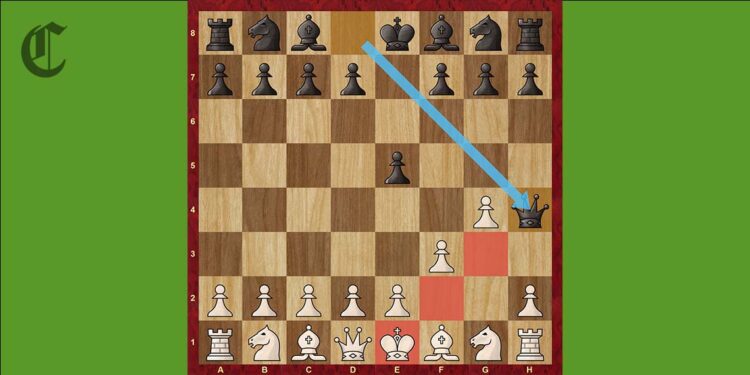Fool’s Mate is a checkmate pattern given only by Black with a Queen or Bishop after White pushes one too many of the wrong pawns forward without moving any other pieces first capable of defending the King being attack. It’s also the fastest checkmate pattern in the game of Chess, meaning it’s delivered in the fewest number of moves with just two moves.
Are you a fool? Good. Now that we’ve established you’re not a fool, let’s make sure you stay that way and don’t become a victim of the dreaded two-move checkmate pattern known as fool’s mate.
Last Updated: September 2nd, 2021
If you’re a beginner chess player, this has most likely happened to you, especially if you play on Chess.com. Most players below 700 or so play either the fool’s mate or the Scholar’s Mate. Both are incredibly quick checkmates and if you’re new, you simply haven’t learned what to do to prevent these mates.
That’s not a problem, that’s why you’re here.
Main Line
The main line of the Fool’s Mate is only played by a complete beginner in Chess.
Examples
Example 1
This example is a true Fool’s mate which is a two move checkmate.
The next couple examples are not true fool’s mates, but they are variations of it. Meaning it’s the same concept as the fool’s mate and occurred in three or four moves instead of two.
Example 2
This mate was done by White this time. Black leaves his King wide open for White’s Queen to slide over to Qh5 delivering mate.
Example 3
In this example, Black delivers mate against White in the exact same way. White pushes his f and g pawns forward leaving a nice diagonal for Black’s Queen to end the game.
How To Defend Against Fool’s Mate
So what do you do if your opponent tries this on you? Well since this mate is achieved with just one major piece, the Queen, the only way to prevent this is to not put your King at such risk. Never push multiple pawns on one side of the board one right after the other. Such as c4, d4, f4, and g4. Doing so leaves a diagonal for the enemy Bishop or Queen to move and give mate in one.
I hope this guide on the Fool’s mate helped you. If you liked this post, you may also be interested in other checkmate patterns like Morphy’s Mate and the Reti’s Mate.


